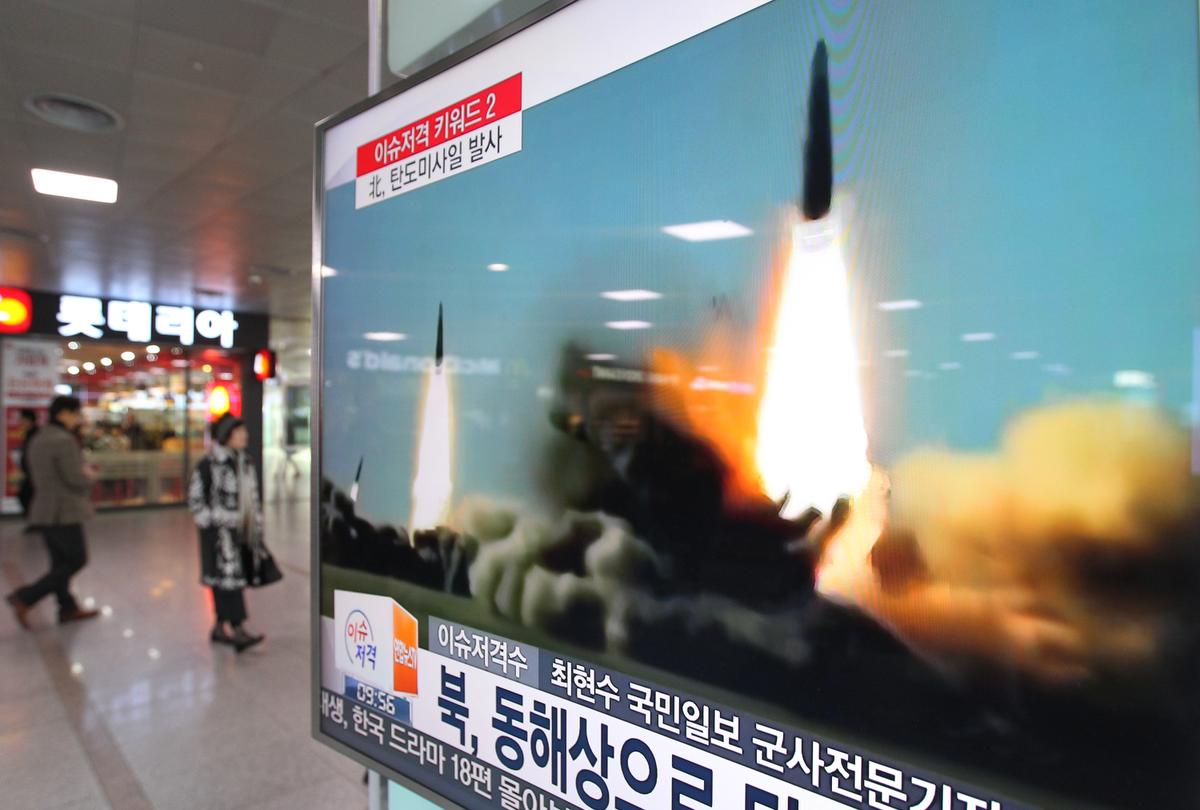The US military said Saturday it had detected an unsuccessful launch by North Korea of a powerful medium-range missile capable of hitting US bases as far away as Guam.
UN resolutions prohibit North Korea from using ballistic missile technology, and this latest test came as the UN Security Council is debating fresh sanctions on Pyongyang following its fifth nuclear test in September.
The US Strategic Command (USSTRATCOM) said the launch, detected just after midday Saturday Korea time, was believed to be of a much-hyped Musudan missile which North Korea has now test-fired seven times — with one partial success.
Pentagon spokesman Gary Ross condemned what he called a clear violation of UN resolutions and urged Pyongyang to refrain from any further actions that might raise already elevated tensions on the Korean peninsula.
Seoul’s defense ministry also confirmed the failed launch, held near an air base in the northwestern city of Kusong in North Korea at 1203 Pyongyang time (0333 GMT).
“This provocation only serves to increase the international community’s resolve to counter (North Korea’s) prohibited activities,” said Pentagon spokesman Gary Ross.
“We remain prepared to defend ourselves and our allies from any attack or provocation,” Ross added.
Pacific threat
Such launches are usually reported within hours or even minutes by the South Korean and US militaries, but Seoul’s defense ministry refused to say why the announcement came so long after the event.
First unveiled as an indigenous missile at a military parade in Pyongyang in October 2010, the Musudan has a theoretical range of anywhere between 2,500 and 4,000 kilometres.
The lower estimate covers the whole of South Korea and Japan, while the upper range would include US military bases on Guam.
After a string of five failed launches, North Korea test fired a Musudan in June that flew 400 kilometres into the Sea of Japan (East Sea).
That test was hailed by leader Kim Jong-Un as proof of the North’s ability to strike US bases across “the Pacific operation theatre”.
ICBM threat
US weapons analysts say successful Musudan testing could help the nuclear-armed North develop an operational intercontinental ballistic missile (ICBM) capable of striking the US mainland by 2020.
The North has publicly displayed an ICBM, called the KN-08, which uses the same engine technology as the Musudan but has never been test-fired.
The North Korean state media made no mention of Saturday’s attempted launch, but the official KCNA news agency carried a foreign ministry statement warning that the United States would “pay a high price” for recent hostile behaviour that had “hurt the dignity of the supreme leadership”.
President Barack Obama “will come to understand the meaning of the price before he leaves the White House,” a ministry spokesman said.
There has been widespread speculation — backed by satellite imagery showing activity at key military installations — that the North is preparing a sixth nuclear test or a long-range rocket launch — or possibly both.
The latest Musudan test was the first since Seoul and Washington agreed to deploy a sophisticated US anti-missile system on South Korean soil to curb the North’s growing nuclear weapons threat.
Pyongyang has threatened to take “physical action” against the new system, which has also been condemned by China as a US bid to flex its military muscle in the region.










